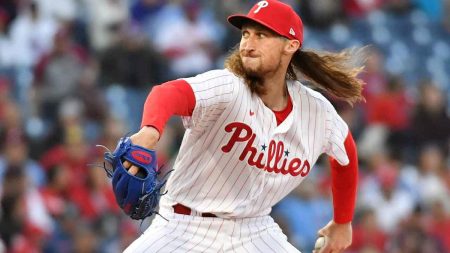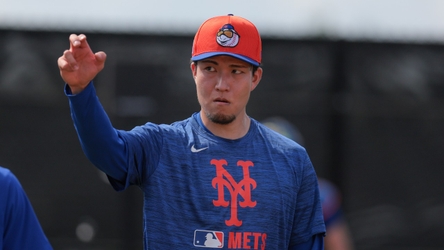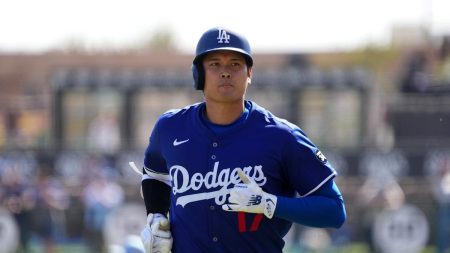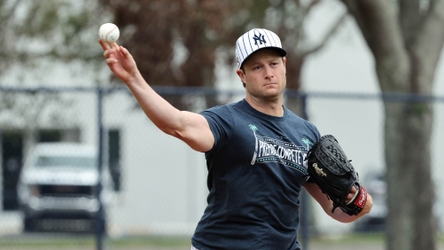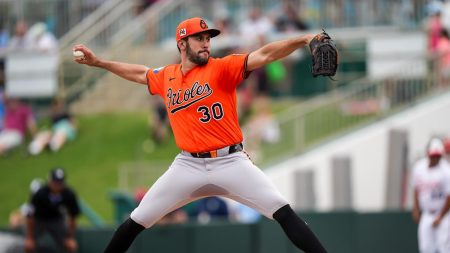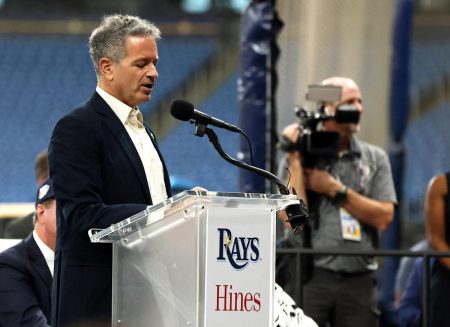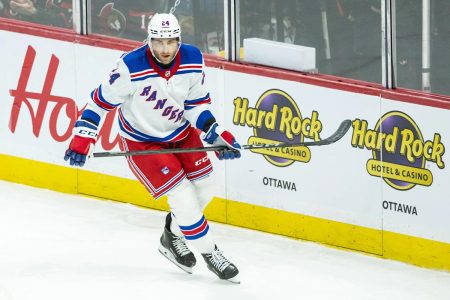Understanding the "Buy Low" Strategy in Fantasy Baseball
Identifying players to "buy low" on in fantasy baseball is an exciting yet nerve-wracking task. It involves finding players whose current value and performance metrics suggest they are undervalued and poised for improvement. However, it’s fraught with uncertainties. What if the player just isn’t any good? Or what if the advanced metrics paint a rosier picture than the actual results warrant? These are valid concerns, and to navigate them, one of my favorite tools is the SIERA leaderboard. SIERA, or Skill-Interactive Earned Run Average, is a metric that attempts to quantify a pitcher’s performance by eliminating factors beyond their control, such as fielding and sequencing of hits. Instead, it focuses on the pitcher’s ability to prevent hard contact and generate swings and misses. This makes it a highly predictive statistic, often outperforming other ERA estimators like xFIP and ERA.
Reid Detmers – Los Angeles Angels
Reid Detmers has appeared in multiple articles of my offseason research, and while I’m not trying to become the "Reid Detmers Guy," his consistent appearance is a testament to his potential. In 2024, despite a down year with a 6.69 ERA, Detmers’ swinging strike rate was in the 85th percentile among starters, his Str-ICR was 74th percentile, and his PLV was 67th percentile. These metrics suggest that his raw ability is still very much present. Detmers made significant adjustments to his fastball, adding extension and iVB (induced vertical break) to 17.1 inches, which is well above average. This change likely contributed to a drop in Ideal Contact Rate (ICR) and an increase in swinging strikes. His slider, while effective, still needs better command to be a consistent weapon. If Detmers can refine his command, especially of his secondary pitches, a breakout season seems highly probable, and his SIERA of 3.77 suggests that he has the potential to significantly improve his ERA.
David Festa – Minnesota Twins
David Festa is another pitcher who caught my attention. Despite a 5.13 ERA, his SIERA of 3.65 indicates that he may have been a bit unlucky. Festa has struggled with walks and home runs, which has kept his ratios from being elite, but he has shown a great ability to adjust to big league hitters. In his next 12 appearances after his rough start, he posted a 3.81 ERA, 1.25 WHIP, and 30% strikeout rate. One of his adjustments was to lean more on his slider, increasing its usage from 24% to 33% in his final five appearances. The slider has a 24% swinging strike rate and decent command, making it a valuable pitch against righties. Festa’s curveball also has potential, but he needs to improve his command to make it consistently effective. The primary concern is his spot in the Twins’ rotation. If Chris Paddack remains in the rotation, Festa might start the year in Triple-A, but his raw talent and recent adjustments make him a player to watch closely.
Brandon Pfaadt – Arizona Diamondbacks
Brandon Pfaadt, while intriguing, does not fully convince me. His high ICR (40.2%) and poor balls-in-play rate (19%) are significant red flags, indicating that he is not fooling hitters and allowing a lot of hard contact. Pfaadt’s pitch mix is primarily a four-seamer and a sweeper, with a changeup that he throws more to lefties. His sweeper has a good swinging strike rate to lefties but gets hammered when not located well, with a 50% ICR and 33.3% HR/FB ratio. Similarly, his four-seamer gets hit hard by lefties. These issues have persisted for two years, and his splits worsened in 2024. While his SIERA of 3.65 is promising, I need to see improved command and better results against lefties before I can fully buy into his potential.
Nick Lodolo – Cincinnati Reds
Nick Lodolo’s talent is undeniable, but health remains his Achilles’ heel. In his first 11 starts of 2024, he posted a 2.76 ERA and 1.01 WHIP, with a 26% strikeout rate. However, injuries struck again, and he struggled for the remainder of the season. Lodolo has a diverse arsenal, with two fastballs and both a curve and changeup, making him effective against both righties and lefties. His arm angle, while providing unique horizontal movement, also leads to command issues, causing him to throw pitches in the middle of the plate. Despite these challenges, his SIERA of 3.78 indicates that he has the potential to bounce back. If he can stay healthy and refine his command, Lodolo could easily become a top-25 fantasy starter in 2025.
Edward Cabrera – Miami Marlins
Edward Cabrera is another pitcher with significant raw stuff, as evidenced by his 99 Stuff+ grade and 11.9% SwStr%. However, his 1.37 WHIP and 42% zone rate are concerning. Cabrera’s four-seamer, which averages 96.3 mph, should generate more swings and misses, but poor command often leads to middle-of-the-zone pitches that get hammered. His changeup, his best pitch, is highly effective against righties, with a 24% SwStr% and a 21.4% ICR. However, his command of this pitch suffered in 2024, particularly when thrown to lefties. Cabrera also has a curve and a slider, both of which could be intriguing if he improves his command. The SIERA of 4.22 suggests that he could improve his ERA, but I need to see more consistent command before fully committing. Nevertheless, his raw talent makes him a worthwhile late-round flier.
Gavin Williams, Hayden Birdsong, and Kyle Harrison – Philadelphia and San Francisco Giants
Gavin Williams, Hayden Birdsong, and Kyle Harrison are all young pitchers with potential, but their paths to fantasy relevance differ significantly. Williams, a left-hander with a four-seamer and a slider, has been a consistent strike thrower and has shown the ability to miss bats. His SIERA of 4.19 suggests that he could improve his ERA, and I’m optimistic about his 2025 performance. Hayden Birdsong and Kyle Harrison, both part of the San Francisco Giants, have their fans in the fantasy community. Birdsong’s slider and curveball are intriguing, but his command issues and lack of a reliable third pitch make him a risky proposition. Harrison, on the other hand, has hinted at adding a cutter this off-season, which could improve his ability to attack righties inside and make his other pitches more effective. While Birdsong might start the year in Triple-A, Harrison and Williams are both worth monitoring closely for their potential to break out in 2025.
Jared Jones – Pittsburgh Pirates
Jared Jones is a pitcher I’ve been bullish on, but Nick Pollack tempered my enthusiasm during our "On the Corner" podcast episodes. Jones has an elite four-seam fastball and slider combination, which worked well for Spencer Strider and can certainly benefit Jones. However, he struggled to maintain fastball velocity as the game progressed, leading to harder contact and diminished effectiveness. Jones is also considering adding a sinker to his pitch mix, which could alleviate some of the pressure on his four-seamer and help him get more strikes and weak contact early in the count. His consistent strike-throwing and reported off-season work on refining his curveball and changeup make him a compelling late-round investment. If Jones can improve his command and pitch sequencing, he has the potential to become a top starter in fantasy.
Taj Bradley – Tampa Bay Rays and DJ Herz – Washington Nationals
Taj Bradley’s presence on the SIERA leaderboard continues to fuel optimism. He had a nine-start stretch in June and July where he dominated, posting a 0.82 ERA and 1.01 WHIP. However, command issues have always been his Achilles’ heel. From July 31st onwards, his ERA ballooned to 6.51, and his WHIP to 1.54. Bradley’s four-seam fastball gets hit hard by lefties, and his splitter, while effective against righties, also allows a lot of hard contact when hit. While he has more upside than Brandon Pfaadt, I don’t see a major breakout unless he improves his command and pitching approach to lefties.
DJ Herz, a left-handed pitcher with a promising four-seamer, is a late-round dart throw due to his uncertain rotation spot with the Washington Nationals. Herz’s four-seamer had a 16% SwStr% to righties, and he relied heavily on it, but his lack of elite velocity and extension raises concerns about its sustainability. His changeup, his only real swing-and-miss pitch to lefties, has inconsistent command, and his slider hasn’t shown enough bite to be a reliable third pitch. Despite his SIERA of 3.77, Herz’s command issues and the competition for rotation spots make him a speculative pick at best.
Brayan Bello – Boston Red Sox
Brayan Bello has been a constant in my research, and I genuinely believe 2025 could be his breakout year. Bello tweaked his slider into a sweeper at the end of 2023 and spent the offseason refining it. This change has paid off, with his slider becoming an above-average pitch that he throws nearly 40% of the time to righties. The slider’s SwStr% jumped from 10% in 2023 to 16% in 2024, and its strike rate improved from 54% to 62%. However, his changeup, which has always been his best pitch, suffered in 2024. Bello needs to regain the feel for his changeup to complete his arsenal, but given his strong history with the pitch and the improvements in his slider, I’m optimistic. Bello’s SIERA of 4.13 and his raw stuff make him a high-upside late-round pick, and his adjustments suggest he’s on the right path to a significant leap in performance.
By focusing on pitchers with strong SIERA metrics and complementary advanced stats like SwStr%, K-BB%, and Stuff+, we can identify players who are undervalued and poised for positive regression. Reid Detmers, Nick Lodolo, Jared Jones, and Brayan Bello stand out as pitchers with the potential to deliver significant value if they can improve their command and stay healthy. While David Festa, Gavin Williams, and the Giants’ pitchers have their appeal, they come with more risk and uncertainty. As always, the key is to balance risk and reward, and these pitchers offer a mix that fantasy owners should carefully consider.


